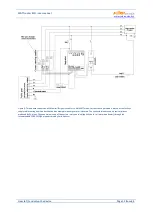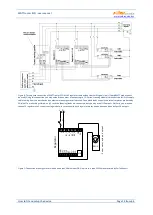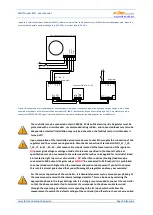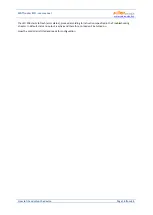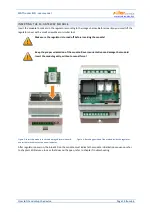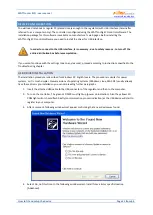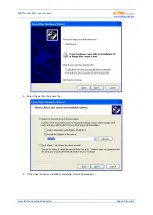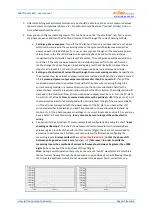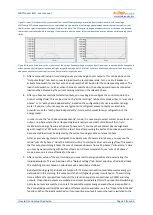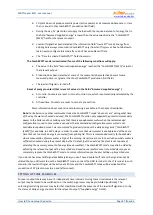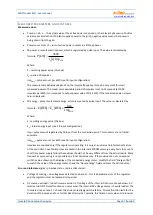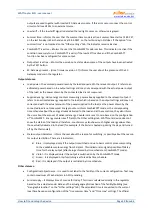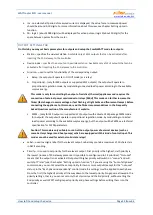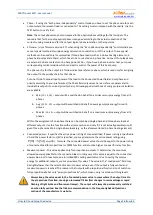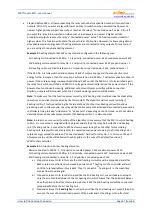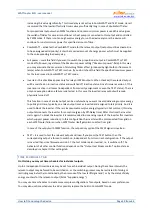
WATTrouter ECO - user manual
www.solarcontrols.cz
How to fit and setup the device
Page 24 from 66
5.
After establishing successful communication, you should be able to see the current measured values
(power outputs on individual phases, etc.). No outputs should be active ("unused" priority). Also no
time schedules should be used.
6.
Now you can configure measuring inputs. This can be done on the "Input settings" tab. First, you set
the phase sequence and then the direction of current flows through the current sensing module.
a.
Setting up phase sequence:
Turn off the PV-plant and turn on a resistive load on each phase
which will be involved in the measuring process. The system will display measured active
power on each individual phase. For now, you may ignore the signs of the measured power
values. Now, in the Phase field select corresponding phase, based on the actual status
recognized by the controller, and press Write button. The configuration will be saved in the
controller. If the output values measured on individual phases differ too much from the
reality, change the phase for given input and again press the Write button. Repeat these
steps for all 3 inputs IL1, IL2 and IL3 until all measured powers are displayed correctly.
b.
Setting up the direction of current flows through the current sensing module:
As specified in
the previous step, leave loads on measured phases switched on. When the PV-plant is turned
off,
all measured power output values must be smaller than 0 or equal to 0.
If any of the
measured power outputs is positive it means that the phase wire is passing through the
current sensing module in a reverse direction. Use the Current orientation field for the
relevant phase, select the reversed option and press the Write button. The configuration will
be saved in the controller. Now, all measured power outputs must be <= 0. Turn the PV-plant
on and turn off all loads.
Now, measured outputs must be positive (>=0).
If they are not, or if
the measured values do not correspond with nominal power ratings of the connected loads,
or if they do not correspond with the power output of the PV-plant, you have either still
connected another loads (which you don‘t know about, such as various loads in stand-by
mode, etc.), or the phase sequence in voltage or in current inputs does not match, or you may
have a defect in household wiring.
In any case, make sure to inspect the entire electric
wiring.
c.
You can verify the correctness of measurement input configuration by using the chart "
Input
checking oscilloscope
". This chart shows measured current waveforms in selected phase,
values are given in units of the built-in A/D-converter (digits), these are not normalized to
amps due to performance. This feature should only aid the fitter when configuring the
measuring inputs.
Always verify with a
resistive (heat) load only
, so that the phase shift
between voltage and current is zero (
)! Moreover, in order to verify the
measuring inputs the amplitude of current half-wave should always be greater than 1000
digits
(to be sure about the correctness of the settings)
.
Note
: During normal operation there may be shown even "exotic" waveforms. Be sure this is
the real current flowing through the phase wire, a superposition of currents flowing through
the connected appliances which are not sinusoidal or their power factor varies from one.



